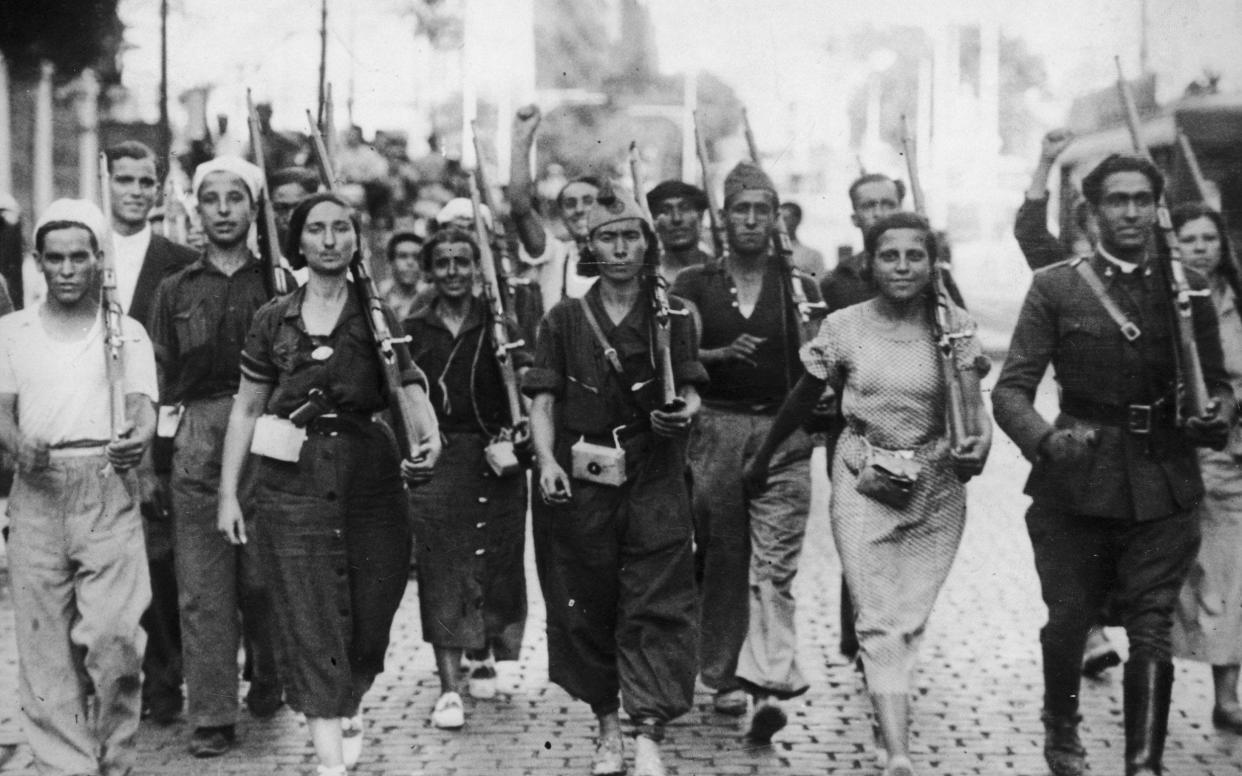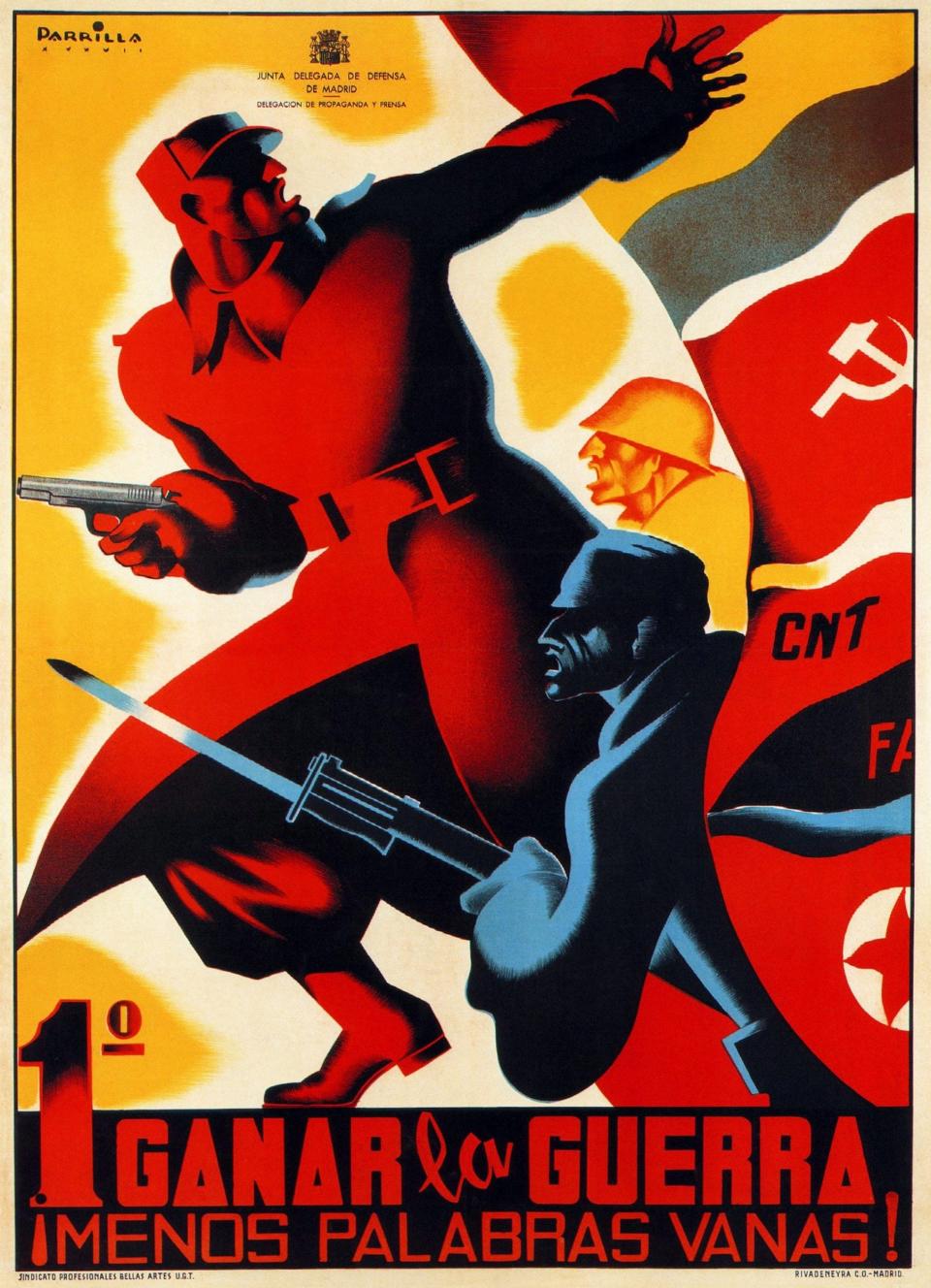How Spain went from Franco’s fist to Catalan insurrection

The historiography of 20th-century Spain is, inevitably, dominated by its civil war, an event that seems to send some professional historians into paroxysms of hysteria and, as a result, to produce accounts of the period that are romantic (in the worst sense of the world) and deeply partisan.
One of the many delights and surprises, then, of Nigel Townson’s magnificent record of Spanish history during the 20th century – or, more precisely, from the “disaster” of 1898, when the country ceased to be an imperial power with the loss of the Philippines and Cuba, to the present realities of post-pandemic Spain – is that he brings an objectivity to the story of Spain’s journey to dictatorship that is as refreshing as it is intelligent. The same applies to his description of the 36 years of Francisco Franco’s rule, and then to the remarkable way in which Spain made the transition from that to being remarkably like every other Western European country.
Townson, who teaches at a university in Madrid and whom this book confirms as a leading historian of the country, draws heavily on modern Spanish-language histories and on the testimonies of a wide cross-section of Spanish society. For all the horrors of the civil war, it becomes apparent how lucky the Spanish were to avoid involvement in the two world wars. As Townson illustrates, however, many of the difficulties in achieving an objective appraisal of Franco and the country he ruled stem from the difference between the neutrality of 1914-18 and what the Spanish called the “non-belligerence” of 1939-45 – which Sir Samuel Hoare, the British ambassador to Madrid, said “by no stretch of the imagination” could be considered the same thing. Franco irreparably harmed his and his regime’s reputation by doing favours for the Germans, such as allowing their submarines to be repaired in his dockyards and their spies to operate freely, but he was too intelligent to contemplate entering the war on Hitler’s side.
Franco was assisted in his victory in the civil war by Axis troops from Italy and German bombers proving their point at Guernica. He made the mistake of meeting Hitler at Hendaye in November 1940 and asking him to secure some French territory for Spain, at a time when Hitler had Vichy exactly where he wanted it and did not wish to give his French puppets any more cause for grievance. Yet by that point in the narrative, Townson has led his reader to conclude that Franco might have seemed the lesser of two evils: that the Republicans against whom he fought were at best disorganised and incompetent and at worst vicious, cruel, bigoted and, through their devotion to Stalin, just as inclined towards totalitarianism.
In what during the civil war became a competition of atrocities, the nationalists had little to learn from the republicans, who set something of a gold standard for mass murder (especially of members of the clergy) in the early stages of the civil war. Spain had once more, after its humiliation in 1898 and its attempts at “regeneration” thereafter, been reduced to a basket-case with its ruling Leftists divided and fractious: that the army took them on was inevitable. The nationalists won partly because they had discipline and were fired up by their attachment to traditional Spanish values. It wasn’t pleasant, but then (it is clear) neither was the alternative.

Townson is thoughtful about exactly what sort of ideologue Franco was. He attracts the label of “fascist”, and he was certainly (to use an adjective Townson sensibly applies to him) fascistic, but he was nothing like Mussolini, and even less like the genocidal maniac Hitler – any more than Churchill politically resembled his ally Stalin. Franco was driven by various forces that his fellow dictators either did not recognise, or picked only as it suited them. He was a devout anti-Communist, a creed to which he clung until his death, and which made him such a popular ally of America and the West during the Cold War. He was motivated by a fierce desire to make the Catholic Church a pillar of his society, and indeed it was until he died, meaning the permissive society by-passed Spain.
He found himself isolated at the end of the war, but within a decade had led his regime in a remarkable re-branding, and was the West’s favourite dictator; a figure far from unusual in a Europe that contained the far more repressive totalitarians of the Soviet bloc, and his neighbour Salazar in Portugal. Spain in the 1940s and early 1950s was an economically and socially backward country, with considerable privations and serious hunger during the war; it had that in common with much of Europe. As Townson points out, in terms of cruelty to his opponents, Franco was a poor amateur compared with (say) Tito in Yugoslavia.
Once American money poured in, from the mid-1950s, Spain changed: its people acquired cars and televisions. There was no democratic election in the country until 1977, but dissent flourished and as the dictator aged, attempts to stifle it were less and less effective. The country joined Nato, and – after the restoration of the monarchy, following Franco’s death in 1975 – the EU as well. The attempted coup of 1981 was a damp squib, and there have been no subsequent attempts to upend democracy.
Townson speeds through the last couple of decades, and rightly so: it is too early to write their history. But one day an assessment will have to be made of Spain’s economic reliance on Germany, which cannot go on forever, and how far its present stagnant, high-unemployment model is the fault of belonging to a European monetary system whose grotesquely overvalued currency does not reflect the reality of Spain’s domestic economy, and never will.
Townson’s book shows an alarming circularity that must be addressed before long. In the early 20th century, Catalonia was aggrieved that its wealth was being used to subsidise the rest of a country determined to live beyond its means. The same is true now, and is at the root of the movement for Catalan separatism that Madrid has not driven away. In the years to come, Townson is likely to find he has much more to write on these vital and compelling subjects. In the meantime, this stunning and long-overdue pursuit of the truth is his masterpiece.
The Penguin History of Modern Spain is published by Penguin at £30. To order your copy, call 0844 871 1514 or visit Telegraph Books

